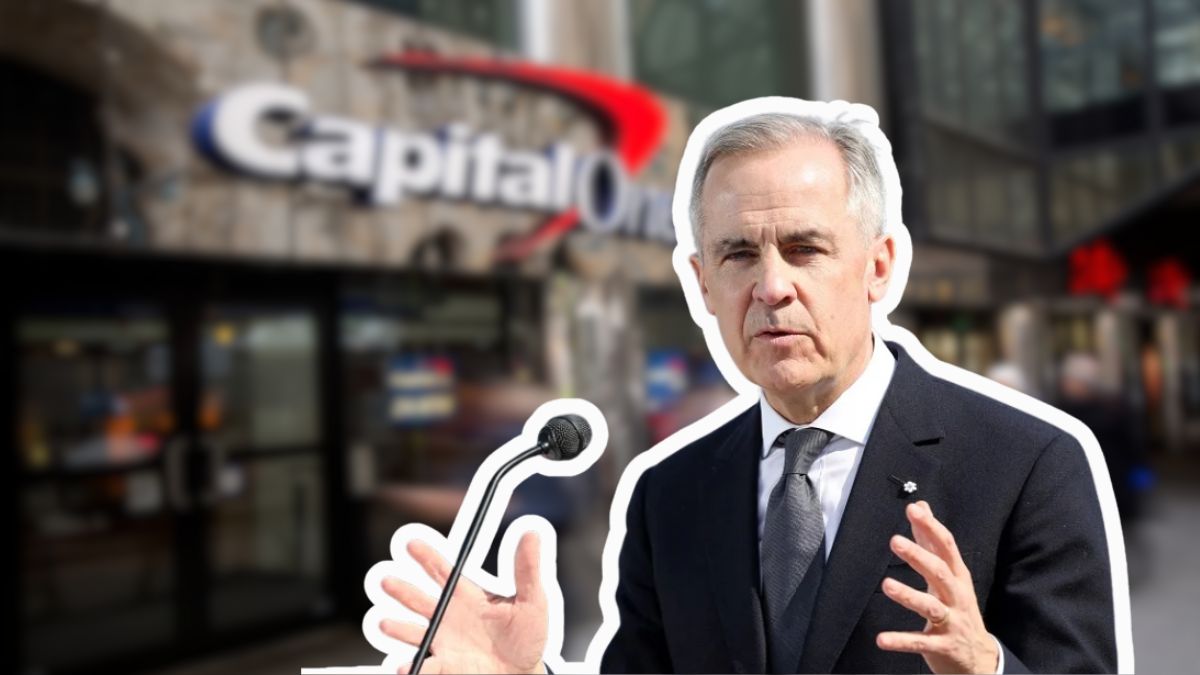Millions of Americans who trusted Capital One with their savings accounts could soon receive compensation after one of the largest financial settlements in recent banking history. The bank has agreed to pay \$425 million to resolve claims that it misled customers by leaving them in outdated, low-interest savings accounts while promoting nearly identical new accounts with significantly higher yields.
The case underscores a broader issue in the U.S. financial system: how banks treat long-term customers in an era of rapidly changing interest rates. For many, the difference translated into thousands of dollars in lost earnings, sparking outrage and regulatory scrutiny.
With settlement payouts expected to begin in late 2025, here’s a complete breakdown of what happened, who qualifies, how much compensation may be available, and the critical dates customers need to remember.
How the Capital One Case Began
The Launch of 360 Performance Savings
In September 2019, Capital One introduced the 360 Performance Savings account, advertising a competitive 1.90% APY at a time when rates were climbing across the market. New customers were encouraged to switch or open accounts, but those who already held Capital One’s 360 Savings account were left behind.
Instead of enjoying similar high returns, long-time 360 Savings customers continued earning as little as 0.30% APY, even as competitors offered better yields. Over time, the gap between the two accounts widened dramatically. By 2023, Performance Savings accounts paid up to 4.35% APY, while legacy accounts remained stagnant.
Allegations of Deception
The lawsuit alleged that Capital One deliberately kept customers uninformed about the newer, higher-interest option. Internal guidance allegedly instructed bank employees not to mention the Performance Savings account unless customers specifically asked.
As a result, millions of consumers missed out on substantial interest income. For some households, the difference amounted to several thousand dollars over a six-year period.
The \$425 Million Settlement Explained
The final settlement, announced in June 2025, is structured to provide both immediate compensation and future benefits. It includes:
| Settlement Category | Allocation | Purpose |
|---|---|---|
| Cash Payments | \$300 million | Compensates customers for missed interest earnings between 2019–2025 |
| Additional Interest Fund | \$125 million | Provides enhanced interest rates for customers who keep their accounts open |
This two-part structure allows customers to either maximize their one-time payout or continue benefiting from extra interest in the years ahead.
Who Is Eligible?
Eligibility is broad. Anyone who held a Capital One 360 Savings account at any time between:
- September 18, 2019 and
- June 16, 2025
is automatically included in the settlement class.
No Claim Form Required
Unlike many class-action settlements, customers do not need to file a claim to participate. Capital One will use account records to identify eligible individuals. Payments will be sent automatically, either electronically or by check.
Cash Boost for Closing Accounts
One unique feature of this settlement is a 15% cash bonus for customers who close their 360 Savings account before October 2, 2025.
- Those who close their accounts will receive a larger one-time cash payout.
- However, they will lose eligibility for the future interest enhancements funded by the \$125 million pool.
This forces customers to make a strategic decision: take the bigger upfront payment, or keep the account and benefit from potentially higher yields going forward.
Legal and Regulatory Actions
New York Attorney General Leads the Case
The lawsuit gained momentum when New York Attorney General Letitia James filed a complaint in May 2025, accusing Capital One of consumer fraud and deceptive practices. The AG’s office argued that the bank misrepresented the value of its savings products while concealing better-performing alternatives.
Federal Scrutiny and CFPB Withdrawal
Earlier in 2025, the Consumer Financial Protection Bureau (CFPB) launched its own lawsuit, estimating that consumers had lost nearly \$2 billion in interest due to Capital One’s practices. However, in February 2025, the CFPB abruptly withdrew its complaint following leadership changes, a move critics described as “a retreat from accountability.”
Despite this, the private class-action case continued, culminating in the June 2025 settlement.
Capital One’s Position
While Capital One has denied wrongdoing, it agreed to the \$425 million settlement to avoid prolonged litigation. The bank maintains that customers always had the option to switch accounts, but admitted that clearer communication might have prevented confusion.
Key Dates Customers Must Know
| Date | Milestone |
|---|---|
| Sept 18, 2019 | Launch of 360 Performance Savings account |
| June 16, 2025 | Final eligibility cutoff date for settlement class |
| July 2025 | Settlement notices distributed to class members |
| Oct 2, 2025 | Deadline to close account for 15% cash bonus |
| Late 2025 | Payments expected to begin after court approval |
Steps for Affected Customers
If you had a Capital One 360 Savings account between 2019 and 2025:
- Check your mail/email: Settlement notices were sent in July 2025.
- Choose a payment method: Opt for direct deposit if possible to avoid check delays.
- Decide on your account status: Closing your account before October 2 means a larger one-time payout but no future interest bonus.
- Monitor updates: The official website capitalone360savingsaccountlitigation.com provides the latest information.
Broader Implications for Banking Transparency
This case highlights a growing concern in the U.S. banking industry: the treatment of legacy account holders.
The Risk of “Silent Losses”
When banks launch new, higher-yield accounts, existing customers often remain in older products unless they take action. For many, this results in silent financial losses—earning pennies while new customers receive competitive rates.
Pressure on Other Banks
Capital One’s settlement could set a precedent, pressuring other major banks to:
- Increase transparency when launching new accounts.
- Notify customers directly about better interest rate options.
- Review legacy products to ensure fairness.
Financial experts warn that similar practices exist across the industry, suggesting this case could spark further lawsuits.
What Customers Stand to Gain
For individual customers, the payout depends on account balances, how long they held the account, and whether they choose to close it before October 2.
- Small savers: Those with modest balances may receive smaller payments but can still expect compensation.
- Long-term, high-balance savers: Could receive hundreds or even thousands of dollars in lost interest repayments.
- Future account holders: May benefit from stronger regulations and better transparency in the industry.
5 SEO-Friendly FAQs
Q1: Who qualifies for the Capital One 360 Savings settlement?
Anyone who held a Capital One 360 Savings account between September 18, 2019, and June 16, 2025 is eligible.
Q2: Do I need to file a claim to get my payout?
No. Customers are automatically included and payments will be sent directly.
Q3: How much money will I receive?
Payouts depend on account balances and length of time the account was held. Some customers may receive a few dollars, while others could see hundreds or thousands.
Q4: What happens if I close my account before October 2, 2025?
You’ll receive a 15% larger one-time cash payment but forfeit eligibility for future interest enhancements.
Q5: When will payments be issued?
Payments are expected to begin in late 2025, once the settlement receives final court approval.










